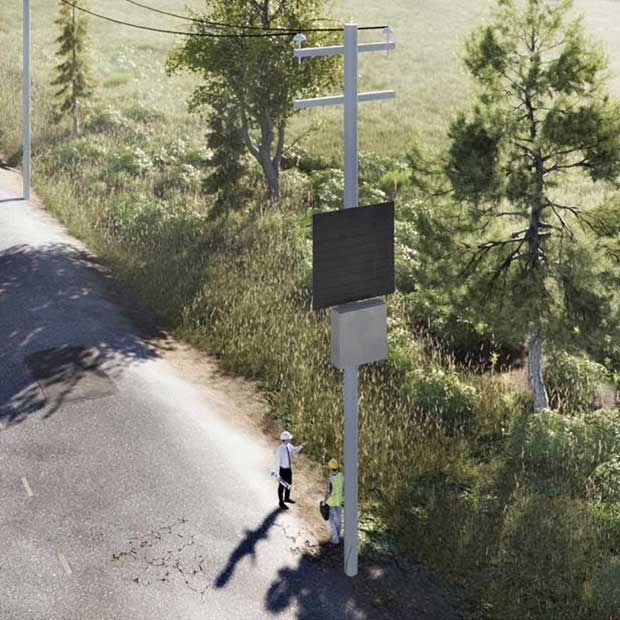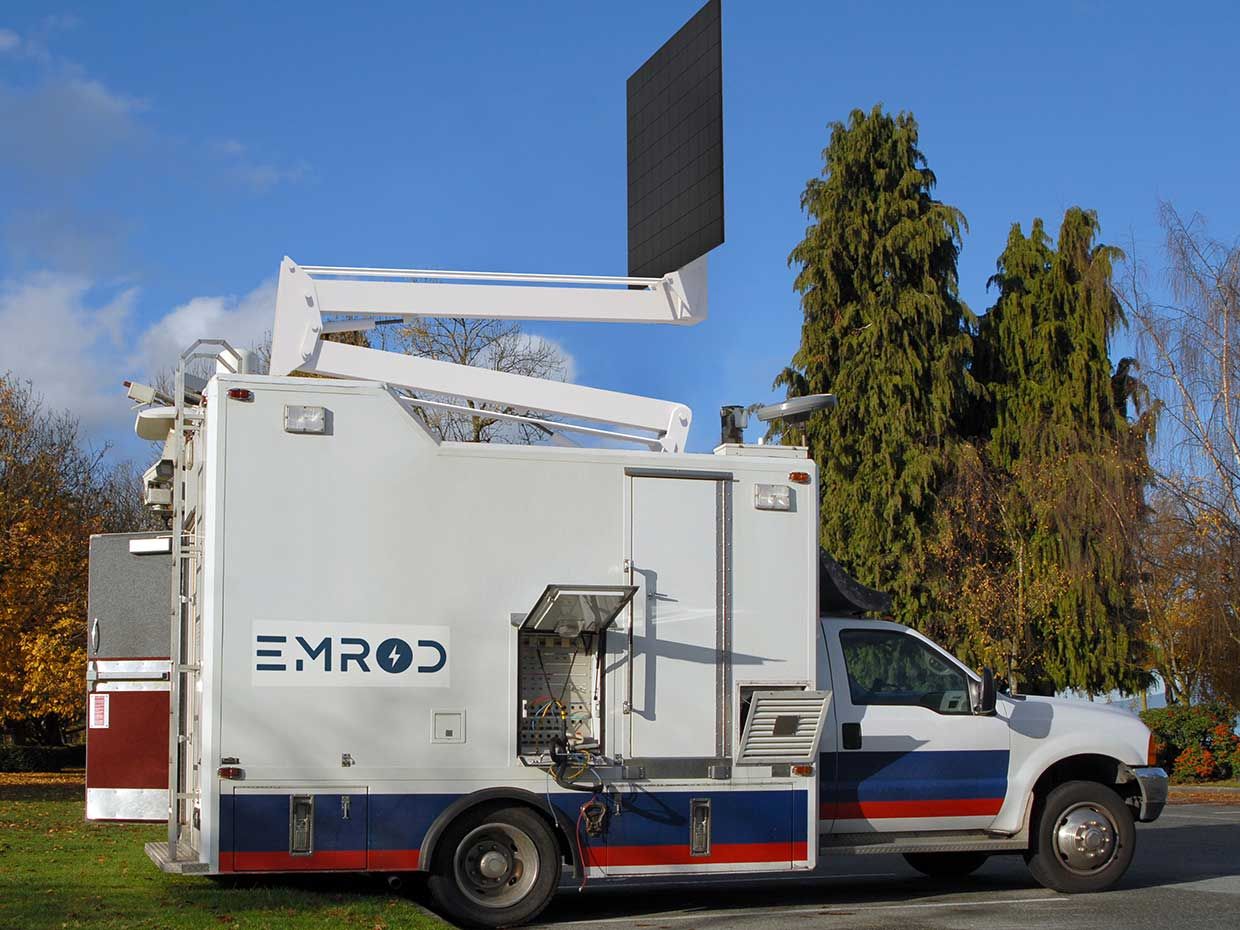Emrod Chases The Dream Of Utility-Scale Wireless Power Transmission
California wildfires knock out electric power to thousands of people; a hurricane destroys transmission lines that link electric power stations to cities and towns; an earthquake shatters homes and disrupts power service. The headlines are dramatic and seem to occur more and more often.
The fundamental vulnerability in each case is that the power grid relies on metal cables to carry electricity every meter along the way. Since the days of Nikola Tesla and his famous coil, inventors and engineers have dreamt of being able to send large amounts of electricity over long distances, and all without wires.
During the next several months, a startup company, a government-backed innovation institute and a major electric utility will aim to scale up a wireless electric power transmission system that they say will offer a commercially viable alternative to traditional wire transmission and distribution systems.
The underlying idea is nothing new: energy is converted into electromagnetic radiation by a transmitting antenna, picked up by a receiving antenna, and then distributed locally by conventional means. This is the same thing that happens in any radio system, but in radio the amount of power that reaches the receiver can be minuscule; picking up a few picowatts is all that is needed to deliver an intelligible signal. By contrast, the amount of raw energy sent via wireless power transfer is most important, and means the fraction of transmitted energy that is received becomes the key design parameter.
What's new here is how New Zealand startup Emrod has borrowed ideas from radar and optics and used metamaterials to focus the transmitted radiation even more tightly than previous microwave-based wireless power attempts.
 Photo-illustration: Emrod Conceptual art of a wireless power relay panel mounted on an existing utility service pole.
Photo-illustration: Emrod Conceptual art of a wireless power relay panel mounted on an existing utility service pole. The quasi-optical" system shapes the electromagnetic pulse into a cylindrical beam, thus making it completely different" from the way a cell phone tower or radio antenna works, said Dr. Ray Simpkin, chief science officer at Emrod, which has a Silicon Valley office in addition to its New Zealand base. Simpkin's background is in radar technology and he is on loan from Callaghan Innovation, the New Zealand government-sponsored innovation institute that is backing the wireless power startup.
Emrod's laboratory prototype currently operates indoors at a distance of just 2 meters. Work is under way to build a 40-meter demonstration system, but it, too, will be indoors where conditions can be easily managed. Sometime next year though Emrod plans a field test at a still-to-be-determined grid-connected facility operated by Powerco, New Zealand's second largest utility with around 1.1 million customers.
In an email, Powerco said that it is funding the test with an eye toward learning how much power the system can transmit and over what distance. The utility also is providing technical assistance to help Emrod connect the system to its distribution network. Before that can happen, however, the system must meet a number of safety, performance and environmental requirements.
One safety feature will be an array of lasers spaced along the edges of flat-panel receivers that are planned to catch and then pass along the focused energy beam. These lasers are pointed at sensors at the transmitter array so that if a bird in flight, for example, interrupted one of the lasers, the transmitter would pause a portion of the energy beam long enough for the bird to fly through.
Emrod's electromagnetic beam operates at frequencies classified as industrial, scientific and medical (ISM). The company's founder, Greg Kushnir, said in a recent interview that the power densities are roughly the equivalent of standing in the sun outside at noon, or around 1 kW per square meter.
Emrod sees an opportunity for utilities to deploy its technology to deliver electric service to remote areas and locations with difficult terrain. The company is looking at the feasibility of spanning a 30-km strait between the southern tip of New Zealand and Stewart Island. Emrod estimates that a 40-square-meter transmitter would do the job. And, although without offering detailed cost estimates, Simpkin said the system could cost around 60 percent that of a subsea cable.
 Photo-illustration: Emrod Conceptual photo-illustration of an antenna truck outfitted to supply wireless power to disaster areas
Photo-illustration: Emrod Conceptual photo-illustration of an antenna truck outfitted to supply wireless power to disaster areas Another potential application would be in post-disaster recovery. In that scenario, mobile transmitters would be deployed to close a gap between damaged or destroyed transmission and distribution lines.
The company has a reasonable handle" on costs, Simpkin said, with the main areas for improvement coming from commercially available transmitter components. Here, the company expects that advancements in 5G communications technology will spur efficiency improvements. At present, its least efficient point is at the transmitter where existing electronic components are no better than around 70 percent efficient.
The rule book hasn't really been written," he said, for this effort to meld wireless power transfer with radar and optics. We are taking a softly, softly approach."